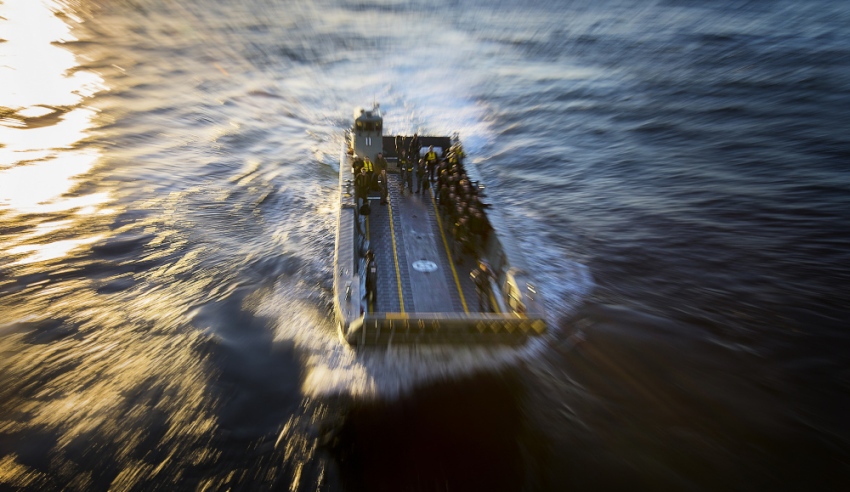Australia’s Landing Helicopter Docks (LHD) are under examination, with tabled answers to Senate defence estimates revealing trials of the LHD Landing Craft (LLC) were unable to correctly support an Army tank.
To continue reading the rest of this article, please log in.
Create free account to get unlimited news articles and more!
The Department of Defence's answers explained that while the Australian Army's M1A1 Abrams tank has been driven on to the Navantia-built LHD, trials were suspended because the LLC sat lower in the water than expected.
Defence said that at this stage further analysis has been undertaken and the Navy is planning to conduct another M1A1 LLC trial.
The department added that while the LLC can carry 65 tonnes in benign weather conditions, decreasing to 38.9 tonnes in sea state 4, further test and evaluation activities may change these figures.
The Abrams tank weighs 62 tonnes and hosts a crew of four – Commander, Gunner, Loader and Driver.
Problems with the LLC come after the vessels' propulsion pods were plagued with issues earlier this year.
LHDs Canberra and Adelaide were dry docked in Sydney from March this year until the end of June following issues in their propulsion pod systems.
As previously reported on Defence Connect, Chief of Navy Vice Admiral Tim Barrett confirmed the migration of oils across seals in the LHDs' azimuth propulsion pod systems and added investigations were continuing to confirm whether this was a design problem or related to damage from excessive use.
Defence has since confirmed the docking and inspection of Adelaide identified wear in some bearings in the port pod, which is assessed to be the likely cause of the oil contamination.
At the estimates, the Chief of Navy also delved into the issues with the aircraft used on the LHDs, along with the aircraft's capabilities and limits.
"There have been a number of incidents with aircraft MRH in our ships at sea, the aircraft itself does not have a rotor brake, which means the blades slow by themselves when the engine's engaged and during that period there is always a chance that wind will affect the disc as the rotor slows," said VADM Barrett.
"We have had incidents ... where those blades have exceeded what we would normally consider to be relevant engineering limits."
The propulsion system of Canberra has been recertified for seagoing operations with minor restrictions in place until Canberra’s planned docking in the third quarter of 2017.
While both ships are expected to return to service before the end of 2017 following these periods of defect rectification, maintenance and trials, only one was able to participate in the recent biennial Australia-US military exercise, Talisman Sabre, off the coast of Queensland.

 Login
Login







